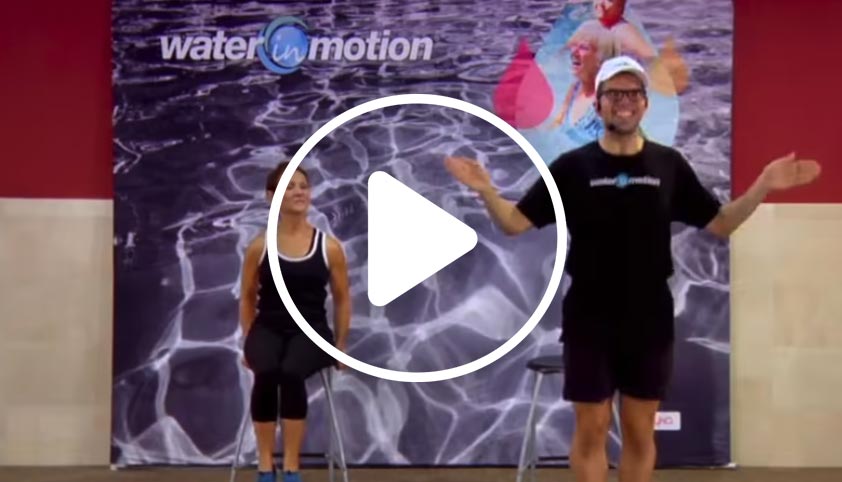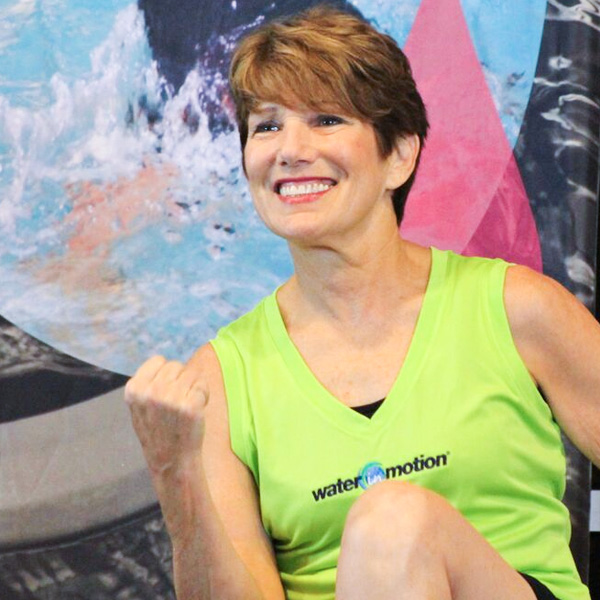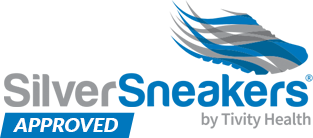WATERinMOTION® Platinum
Growing with a booming population.
WATERinMOTION® Platinum caters to the growing segment of the U.S. population that won’t settle for second best. WATERinMOTION® Platinum supplies safe, effective and fun classes that are guaranteed to bring excitement back into your pool; by offering a system that understands and addresses the specific needs of your 65+ and/or deconditioned client. Our solid ten-year business model continues to receive accolades and to grow through our nationally-recognized leadership team. Having won the Aquatic Exercise Association’s Global award for Contribution to the Aquatic Industry and Instructor of the Year Award, our team of professionals lives on the forefront of exercise programming for this growing market of aqua enthusiasts.
Copy and paste this link to share video on social media: https://youtu.be/Ny7GzxCna6o
Setting the standard for water fitness.
Refreshing member experience every three months through our Wautoship program, WATERinMOTION® Platinum provides new choreography, new music and new marketing to inspire this growing fitness community. WATERinMOTION® Platinum is a licensed aqua exercise program featuring:
- Comprehensive online certification with an optional 8-hour live or streaming program*
- Current choreography video
- 55 minutes of energizing and customized music
- Extensive choreography flash cards, and quick guides
*One Certification includes all 3 formats. A single certification allows you to teach all 3 programs. (Providing your facility is licensed in each program you will be teaching)

Watch Sample Video, Music & Choreo Release Kit
1. WARM-UP – Full Body & Dexterity
This class opens with large, simple cardio moves to gradually prepare the body and mind for what’s to come. The creative movements assist in delivering synovial fluid to joints, while increasing the core body temperature and heart rate paying special attention to manual dexterity and ankle mobility.
2. POSTURE – Alignment & Range of Motion
As one transitions to multi-joint patterns, focus shifts to postural alignment while increasing overall ROM (Range of Motion).
3. BALANCE – Single Leg Challenges and Turbulence
Dynamic balance challenges and directional changes encourage fast twitch muscle fibers.
4. COMMUNITY
Get into the swing of things with a fantastic variety of team building exercises to enhance the group dynamics of this water pool party!
5. MEMORY – Neuroplasticity
Simple cardio movements combine with neuroplasticity challenges to stimulate brain activity leading to improved cognitive function and enhanced memory.
6. FAST TWITCH – Strength
Enjoy this speed track which incorporates movements at land-tempo in the pool to combat the loss of fast twitch muscle fibers as we age.
7. MOBILITY – Hips & Shoulders
Movements in this track shape and tone the entire body to improve overall alignment and increase mobility and strength in the hips and shoulders.
8. ADLs – Activities of Daily Living
Pulling, pushing, lifting, and lowering are all essential movements of life incorporated into this creative track.
9. CORE – Abs & Back
Strengthen your middle section using a variety of exercises to improve the powerhouse of the musculoskeletal system.
10. FLEXIBILITY
In a beautiful closing to our buoyant workout, drop down a gear to focus on flexibility and range of motion featuring the large muscle groups leaving you refreshed and rejuvenated with a positive attitude toward the rest of your day.
Music and Videos are now available in the Clementune app! You can login to the Clementune Redemption Portal here if you already have an account with Yes! Fitness Music or Clementune. If not, you can create and account here.
Upon purchase or renewal of a program, we will issue a release redemption code that gets redeemed on the same Clementune Portal here).
• Focuses on posture, balance, community, neuroplasticity, mobility and activities of daily living.
• Uses slower more intergenerational music that is very recognizable and fun
• Has longer repetitions to increase success for students
• Has 10 tracks to fill a full hour format or can be reduced to 6 or 8 tracks for 30 or 45 minute options
• Incorporates simple but effective cognitive challenges because as the body ages so does the mind
• Focuses more on fast twitch muscle fibers because as we age those muscle fibers deteriorate at a much faster rate than our slow twitch fibers
• Incorporates movements involved in activities of daily living (ADLs) to make the lives of our participants better and more fulfilling
This particular format offers the benefit of a healthy and social workout without the pull that gravity plays on the body.
- Retains all the general health benefits of regular exercise: lose weight, improved mobility, heart health, reduced risk of chronic illness, enhanced energy levels, improved posture, increased flexibility, and more!
- Relieves pressure from the spine and joints facilitating exercise for unique populations.
- Reduces impact and creates less soreness than land-based exercise.
- Requires little or no prior experience for participants to feel comfortable and have a great workout experience.
- Focuses on balance and directional changes.
- Incorporates cognitive challenges because as the body ages so does the mind.
- Focuses on fast twitch muscle fibers because as we age those muscle fibers deteriorate at a much faster rate than our slow twitch fibers.
- Focuses on activities of daily living (ADLs) to make the lives of participants easier on a daily basis.
• Active Aging Adults(55-65) & Seniors (65-90) looking for a lower impact environment while maintaining a healthy workout.
• Deconditioned (overweight or health risks) individuals looking to incorporate a fitness regimen into their lives.
• Individuals with Orthopedic concerns, Arthritis challenges and/or Cognitive deterioration.
• Anyone who has been given the go-ahead from their physician to begin a fitness program after an injury or to start a workout regimen for the first time.
Drawing on over 100 years of combined experience in the aquatic fitness industry, this certification serves as an important first step into the field of teaching water exercise. A combination of home study, training videos, and theoretical exams prepare you for the full day practical course. Practical teaching skills utilizing pre-choreographed routines that are learned serve to enhance your class sequencing, warm-up, progressions, musical phrasing, proper cueing techniques, choreography development, and all the steps required to teach your best class, every class. A complimentary take home practical assessment is included, and this course also provides you with all that you need to succeed as an aquatic fitness professional. Additionally, a downloadable 1.5 hour choreography video, downloadable music, complete educational manual and choreography booklet, flash cards and notes are included in this comprehensive course.
Choose one of our three ways to become certified:
Attend a 1-day live MANIA® (in-person) certification and successfully pass the exam
Attend a 1-day live-streaming certification and successfully pass the exam
Take the online certification and successfully pass the exam
Important information:
Receive three FREE certifications for interested instructors when your facility licenses a WaterinMOTION® program!
CECs: SCW (7.0), AFAA (7.0), ACE (0.9), NASM (0.7), AEA (8.0), ACSM (7.0).
Click here to get certifiedSince most exercise programs are not designed to address the specific needs of those 65 years and older WATERinMOTION® Platinum was created.
Areas of Focus in WATERinMOTION® Platinum:
Manual Dexterity
As we age, we being to lose the manual dexterity or ability to move our hands. The Arthritis Foundation states that aging populations should do exercises with their hands to reverse or decrease these effects and WATERinMOTION® Platinum integrates these exercises into the choreography to do just that.
Application of flexibility
It’s very important for us to focus on the application of flexibility as well. As we age we lose the ability to plantar and dorsi flex our foot. This is why as we age we shuffle and are more prone to falls.
Crossing the Mid-line
We must focus on not crossing the mid line when teaching or crossing the legs over. We do this because some people have less flexibility in the hip girdle or have had hip surgeries and we want to ensure that we stick to the Arthritis Foundation guidelines. People can cross if they feel comfortable but we must show them a proper example.
We must also ensure that we strengthen the adductors of the inner thigh because those muscles strengthen the knee joint to help with balance.
Transitions
In WATERinMOTION® Platinum we want to make our transitions slower and smoother to ensure that the participants have enough time to follow us. Diminished visual and auditory skills that companion aging require us to pay great attention to our students to ensure they are successfully performing the workout.
Shoulder Girdle
We must focus in our flexibility track to impress upon our participants the importance of retracting the head back, scapular retraction and depression; which will avoid the “rounded back” that we get as we age.
Challenge the body and the mind
Be aware that because your class will have different age groups, all with different cognitive levels, that you must challenge the group as a whole. This is one of the most important reasons to change the choreography quarterly because it provides both the physical and cognitive challenges needed to keep the body improving.
Cueing
We also need to be aware of how to cue to this population. Verbally, we are going to simplify our cueing by talking slower, annunciating, and being consistent. We also have to preview early and verbally cue sooner to help our participants follow the transitions easier. Because some of our instructors will be older, when visually cueing, it is important to demonstrate each movement while standing and while seated.
Fast Twitch Focus
Since we lose more fast twitch muscle fibers as we age we want to focus on maintaining these by using more explosive movements, when applicable. And we want to focus on retaining our slow twitch fibers in our cardio sections.
Activities of Daily Living (ADLS)
It’s important for our older adults and deconditioned populations to feel a sense of independence, strength, power and control. As instructors we must focus on stimulating our participants minds, giving them the ability to socialize and give them a sense of well-being and belonging.
REMEMBER: You receive three FREE certifications for interested instructors when your facility licenses a WaterinMOTION® program!



